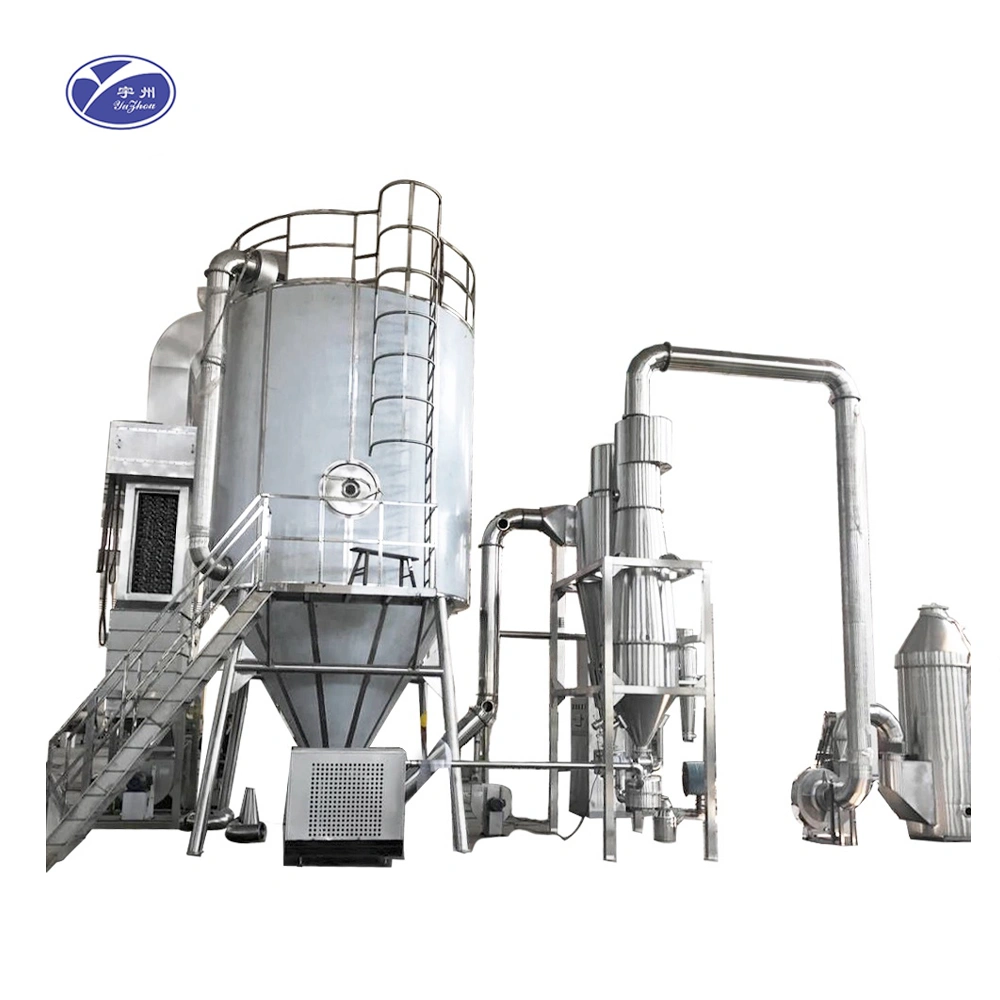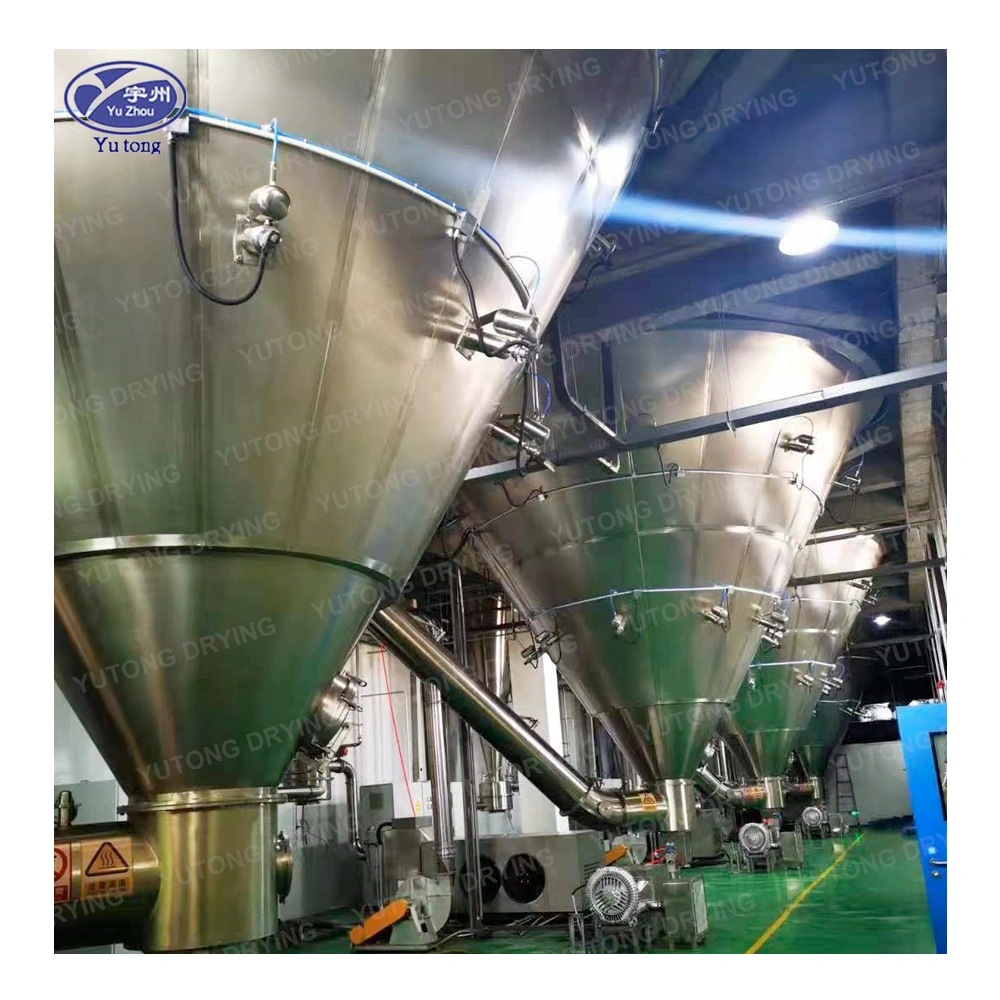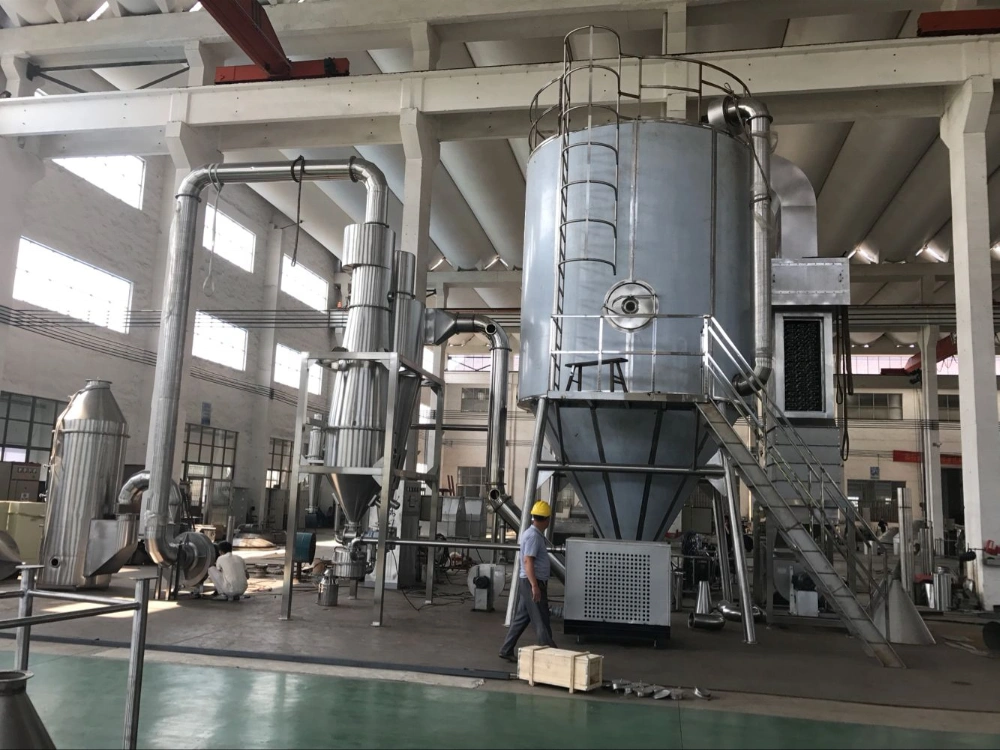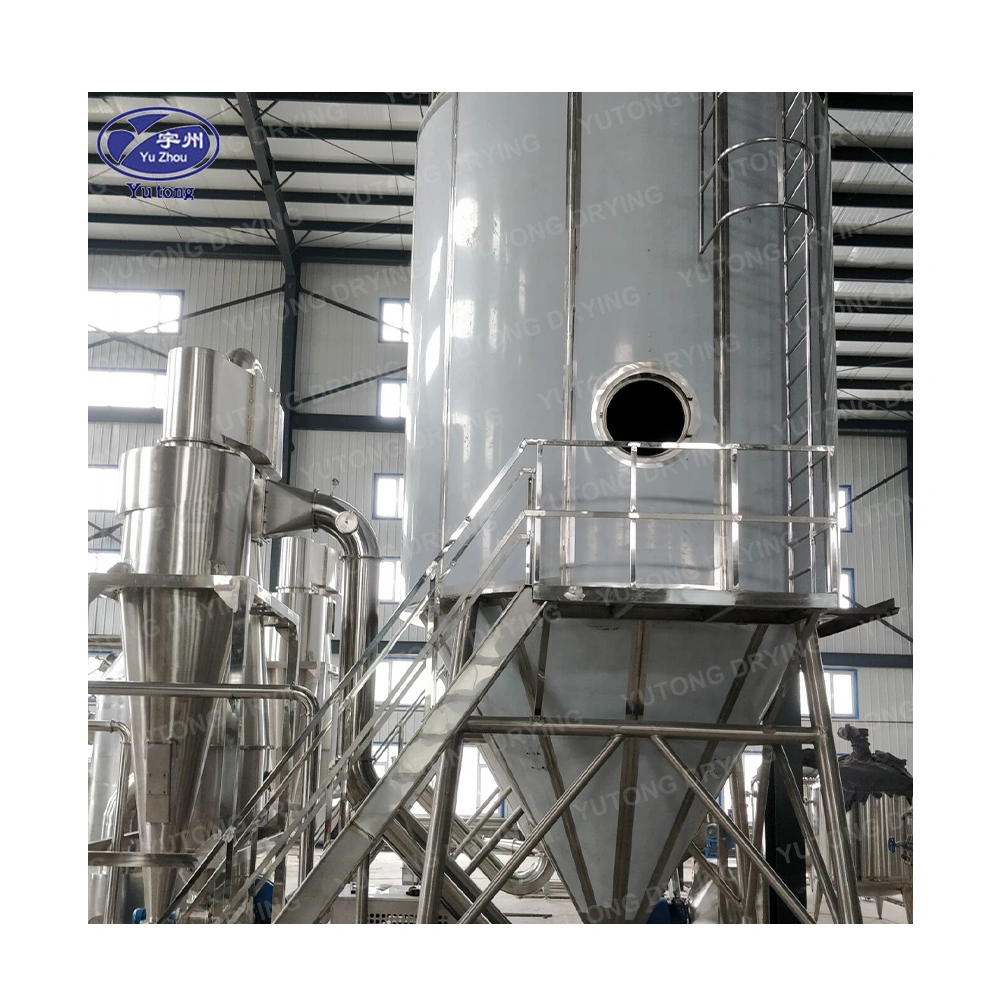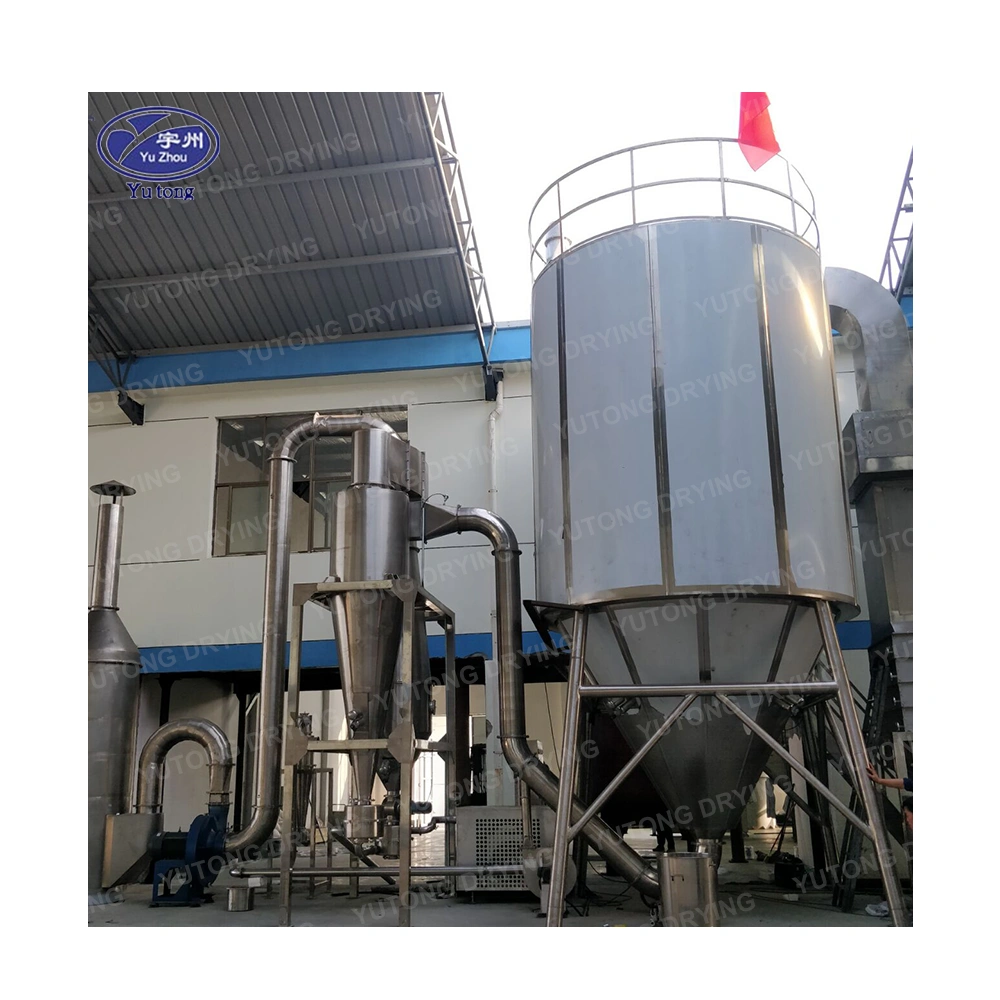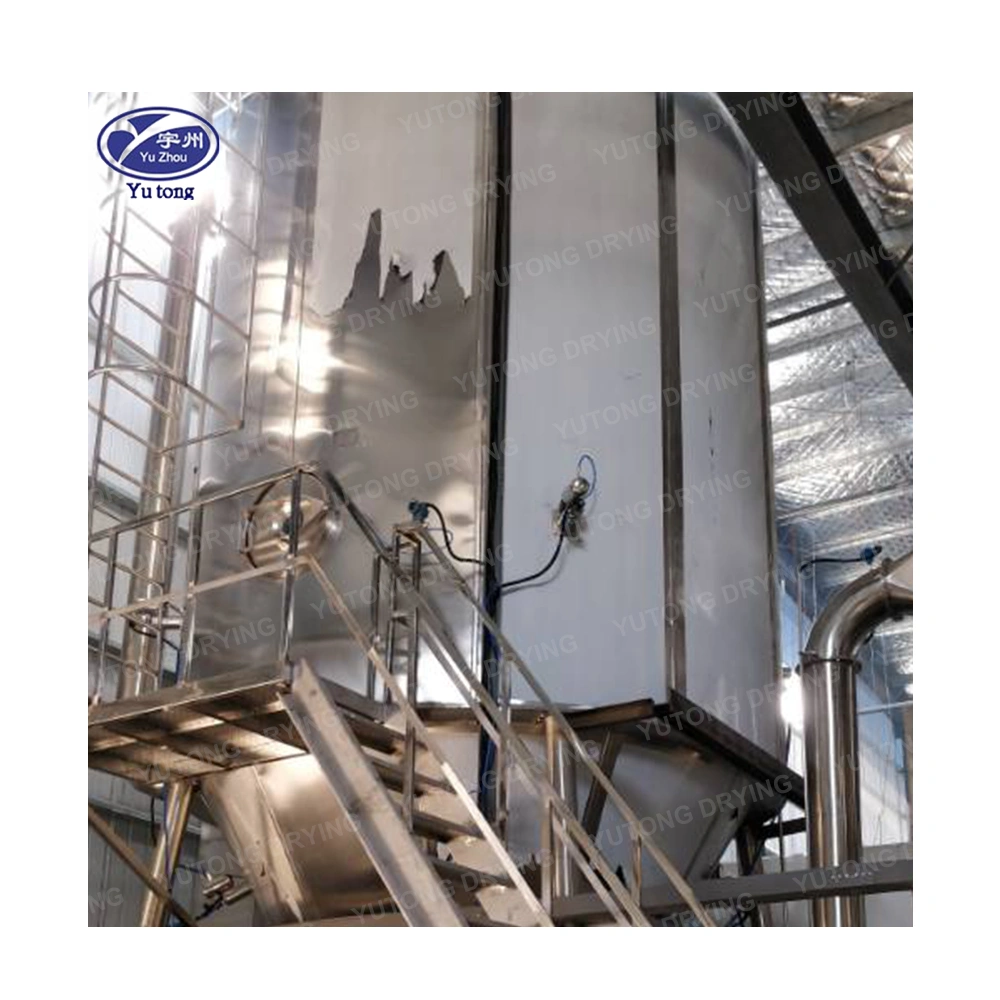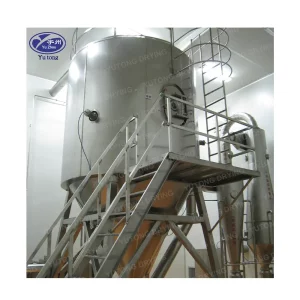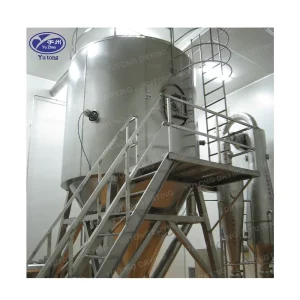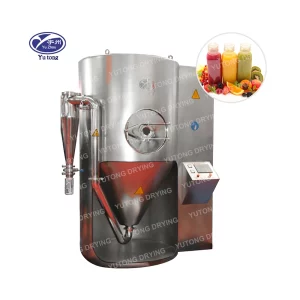Table of Contents
Product Detail
The world of drying technology has seen significant advances over the past decades, and one of the most notable innovations is the portable spray dryer. These compact machines are making it easier for small businesses, researchers, and even home users to dry a wide range of products efficiently. In this article, we’ll delve into the importance of spray dryers, explore various types, and highlight their applications. With the growing need for efficiency and precision in product development and manufacturing, portable spray dryers have become indispensable tools. Their ability to quickly transform liquids into dry powders while preserving essential properties and characteristics makes them a cornerstone in various industries.
What is a Portable Spray Dryer?
A portable spray dryer is a compact device used to convert liquid solutions into dry powders through a process called spray drying. This process is highly efficient and is used across various industries, including pharmaceuticals, food, and materials science. Portable spray dryers are designed to be user-friendly, allowing for easy setup and operation without the need for extensive technical knowledge. These devices are particularly beneficial for users who require the flexibility to work in different environments or need to conduct small-scale experiments without significant investment in infrastructure. Additionally, their compact nature means they can be easily integrated into existing workflows, minimizing disruption and maximizing productivity.
How Does a Spray Dryer Work?
The operation of a spray dryer involves several key steps:
- Atomization: The liquid feed is atomized into a fine mist using a nozzle or rotary atomizer. This step is crucial for ensuring that the drying process is uniform, allowing each droplet to be exposed equally to the drying air.
- Drying Chamber: The mist is introduced into a heated drying chamber where hot air evaporates the moisture, leaving behind dry particles. The temperature and airflow within the chamber are carefully controlled to achieve optimal drying conditions without damaging the product.
- Particle Collection: The dried particles are collected in a cyclone separator or a bag filter. This collection method ensures that even the finest particles are captured, maintaining the quality and consistency of the final product.
This highly efficient process can be tailored to produce particles of specific sizes and properties. By adjusting parameters such as temperature, airflow, and atomization speed, users can customize the drying process to meet their precise requirements.
Types of Spray Dryers
The market offers a variety of spray dryers, each designed for specific applications. Below are some common types:
Ultrasonic Vacuum Spray Dryer
Ultrasonic vacuum spray dryers use ultrasonic waves to create a fine mist. The drying process occurs under vacuum conditions, which allows for drying at lower temperatures. This method is ideal for heat-sensitive materials. The vacuum environment also helps preserve volatile compounds and maintain the integrity of complex molecular structures. These features make ultrasonic vacuum spray dryers particularly suitable for applications in pharmaceuticals and biotechnology, where the preservation of bioactivity and potency is critical.
Centrifugal Spray Dryer
Centrifugal spray dryers use a high-speed rotating disc to atomize the liquid feed. This method is well-suited for large-scale production and offers precise control over particle size. The centrifugal force generated by the rotating disc ensures that the liquid is evenly distributed, resulting in consistent particle formation. Due to their robustness and scalability, centrifugal spray dryers are often employed in industries that require high throughput, such as dairy and food processing.
Electrostatic Spray Dryer
Electrostatic spray dryers use an electric field to charge the droplets. This technique improves the efficiency of particle collection and is ideal for producing fine, uniform powders. The electrostatic charge helps in reducing agglomeration, ensuring that particles remain separate and maintain their desired properties. This makes electrostatic spray dryers particularly valuable in applications where particle uniformity and dispersibility are critical, such as in the production of specialty chemicals and coatings.
PolarDry® Spray Dryer
The PolarDry® spray dryer uses electrostatic technology to dry products at low temperatures. This method is particularly beneficial for preserving the integrity of sensitive compounds. By minimizing heat exposure, PolarDry® spray dryers help retain the nutritional and functional properties of ingredients, making them ideal for the food and nutraceutical industries. The technology is also advantageous for maintaining the stability of flavor compounds and active pharmaceutical ingredients.
Desktop Spray Dryer
Desktop spray dryers are compact and designed for laboratory use. They are ideal for small-scale research and development projects where space is limited. Their portability and ease of use make them a popular choice for academic research and pilot studies. Despite their small size, desktop spray dryers are capable of delivering precise and reliable results, allowing researchers to explore new formulations and process parameters with confidence.
Advantages of Portable Spray Dryers
Portable spray dryers offer numerous advantages over traditional drying methods:
- Flexibility: These dryers can be easily moved and set up in different locations, making them ideal for laboratories and small production facilities. Their portability allows for on-site processing, reducing transportation costs and time delays.
- Cost-Effective: Portable spray dryers are generally more affordable than large industrial units, making them accessible to small businesses and researchers. Their lower initial investment and operating costs make them an attractive option for startups and academic institutions.
- Efficiency: The spray drying process is highly efficient, allowing for rapid drying of large volumes of liquid. This efficiency translates into higher productivity and reduced energy consumption, contributing to sustainable practices.
- Customization: Users can adjust parameters such as temperature and atomization to achieve desired particle sizes and properties. This ability to fine-tune the process enables the production of tailored products that meet specific market demands.
Applications of Portable Spray Dryers
Portable spray dryers are used in various industries for diverse applications:
Pharmaceuticals
In the pharmaceutical industry, spray dryers create powders for tablets and capsules. The ability to control particle size and moisture content is crucial for ensuring product consistency and efficacy. Spray drying also enhances the bioavailability of active pharmaceutical ingredients, making them more effective in therapeutic applications. Additionally, the technology is used for the encapsulation of drugs, providing protection from environmental factors and improving shelf life.
Food and Beverages
Spray drying is commonly used in the food industry to produce powdered ingredients like milk, coffee, and flavors. The process preserves nutritional content and extends shelf life. By converting liquids into powders, manufacturers can reduce packaging and transportation costs while offering consumers convenient, easy-to-use products. The technology is also employed in the creation of instant food products, where rapid rehydration is a key quality attribute.
Materials Science
Researchers in materials science use spray dryers to produce nanoparticles and other specialized materials. The precise control over drying conditions allows for the creation of high-quality products. Spray drying facilitates the production of advanced materials with specific properties, such as enhanced mechanical strength or improved thermal resistance. These materials are integral to the development of new technologies in fields like electronics, aerospace, and energy storage.
Home Use
With the advent of home spray dryers, individuals can now produce their powdered ingredients for culinary and health applications. This opens up new possibilities for home chefs and DIY enthusiasts. By creating custom spice blends, nutritional supplements, or flavorings, users can experiment with new recipes and maintain control over ingredient quality. Home spray dryers also enable the preservation of seasonal produce, reducing food waste and promoting sustainability.
Choosing the Right Spray Dryer
When selecting a spray dryer, consider the following factors:
- Capacity: Ensure the dryer can handle the volume of liquid you need to process. Evaluating your production needs and scaling options will help you choose a model that aligns with your goals.
- Temperature Range: Consider the temperature requirements of your product to avoid degradation. Products sensitive to heat may require low-temperature dryers to maintain their integrity.
- Particle Size: Choose a dryer that can produce the desired particle size for your application. Understanding the end-use application will guide you in selecting the appropriate technology for optimal results.
- Ease of Use: Look for user-friendly models with intuitive controls and easy maintenance. Simplified operation and upkeep can significantly reduce downtime and improve overall productivity.
Renting and Purchasing Options
For those who are not ready to invest in a new spray dryer, renting options are available. This allows users to test different models and configurations before making a purchase. Renting can be an excellent way to evaluate performance and suitability without a long-term commitment. Additionally, refurbished units can offer significant savings without compromising on performance. These units often come with warranties and support, providing a cost-effective solution for budget-conscious buyers.
Safety and Maintenance
Proper safety measures and maintenance are crucial for the optimal operation of a spray dryer. Regular cleaning and inspection of components, such as nozzles and filters, will ensure consistent performance and longevity of the equipment. Preventive maintenance schedules can help identify potential issues before they lead to costly repairs or downtime. Always follow the manufacturer’s guidelines for safe operation. Training personnel on proper usage and safety protocols will further enhance operational efficiency and safety.
Conclusion
The portable spray dryer is a versatile tool that is transforming drying processes across various industries. Its ability to efficiently produce high-quality powders makes it an invaluable asset for researchers, small businesses, and home users alike. By understanding the different types and applications of spray dryers, you can make an informed decision to meet your specific needs. The adaptability and precision of portable spray dryers continue to drive innovation and improve product development.
As technology continues to advance, portable spray dryers will undoubtedly play an even more significant role in innovation and production. Whether you’re in pharmaceuticals, food production, or materials science, a portable spray dryer can significantly enhance your capabilities and open up new possibilities. Embracing this technology not only boosts efficiency but also supports sustainability and innovation in your field.
Specifications
|
spec
|
ZPG-25
|
ZPG-50
|
ZPG-80
|
ZPG-100
|
ZPG-150
|
ZPG-200
|
ZPG-300
|
|
|
evaporation capacity(kg/h)
|
25
|
50
|
80
|
100
|
150
|
200
|
300
|
|
|
process amount of material liquid(kg/h)
|
25-34
|
50-68
|
80-108
|
100-135
|
150-203
|
200-270
|
300-406
|
|
|
output of finished pcoduct(kg/h)
|
4.8-7.2
|
9.2-14
|
14.8-22.4
|
18.4-28
|
24-42
|
36.8-56.4
|
55-85
|
|
|
solid content of material liquid( %)
|
18-30
|
|||||||
|
moisture content of finished product( %)
|
3-5
|
|||||||
|
electric power(kw)
|
63
|
132
|
153
|
204
|
246
|
330
|
||
|
heat source
|
Steam pius electricity
|
|||||||
|
Collecting method of product and its efficiency
|
Grade one or two or three stage cyclone wet dust remover is greater than or equal to 95%
|
|||||||
|
automatic control meters and instruments
|
indicator of not air and exhaust air temperature
|
|||||||
|
temperature of air inlet(℃)
|
160-220
|
|||||||
|
temperature of air outlet(℃)
|
80-100
|
|||||||
|
L
|
7000
|
8000
|
9800
|
11000
|
12200
|
14100
|
15000
|
|
|
overal dimensions(mm)
|
W
|
4000
|
5000
|
5700
|
6200
|
7000
|
7800
|
9000
|
|
H
|
6200
|
6900
|
8000
|
8900
|
10750
|
11900
|
13000
|
|
Applications
Applicable Industries: Building Material Shops, Manufacturing Plant, Machinery Repair Shops, Food & Beverage Factory, Farms, Restaurant, Retail, Food & Beverage Shops

